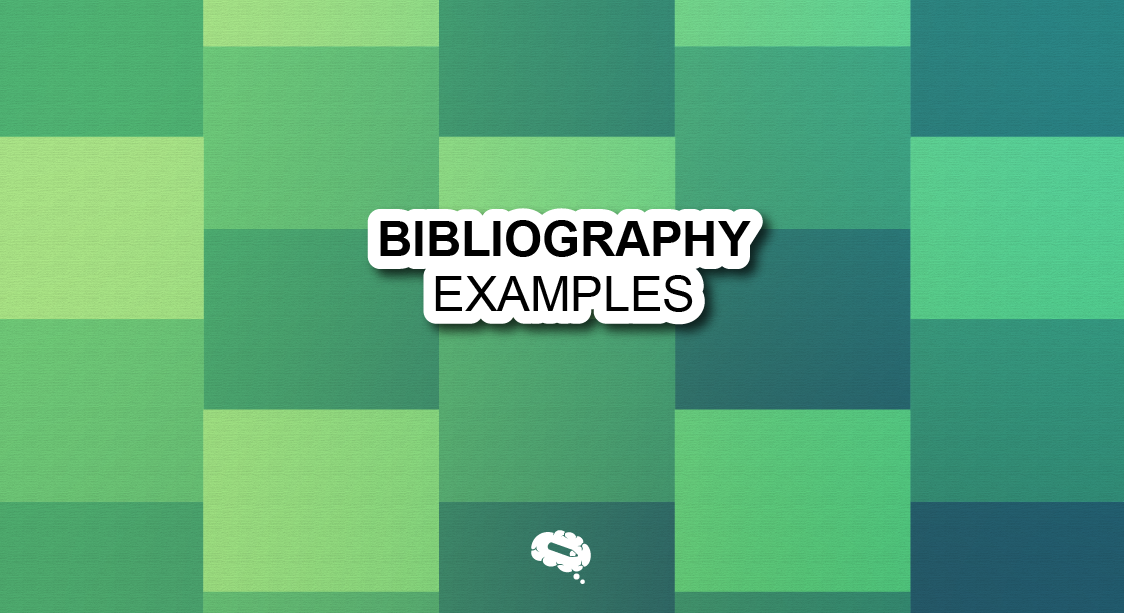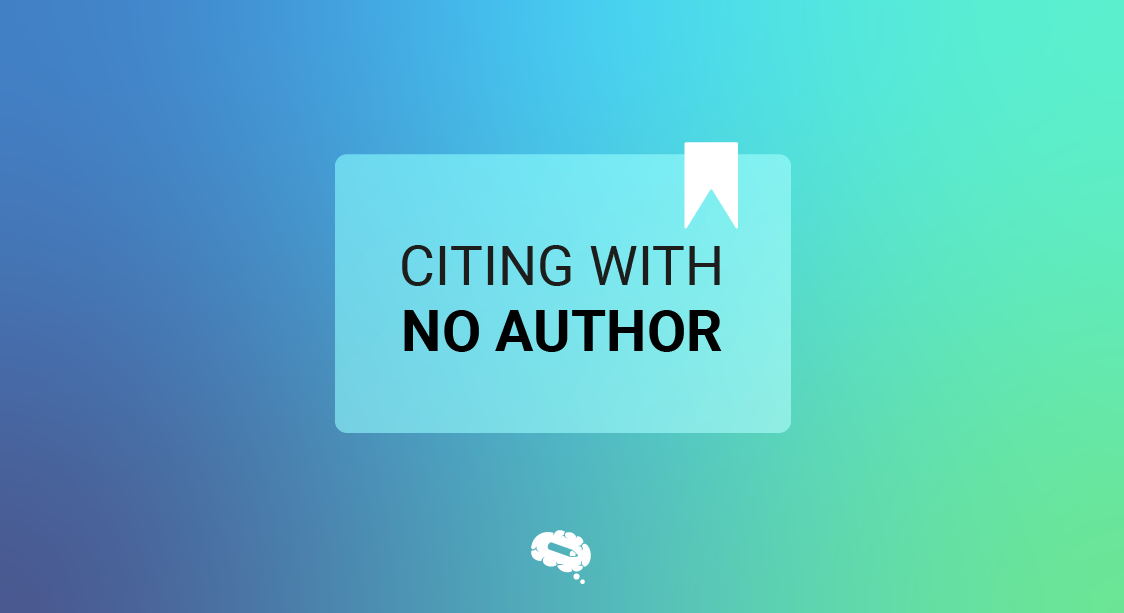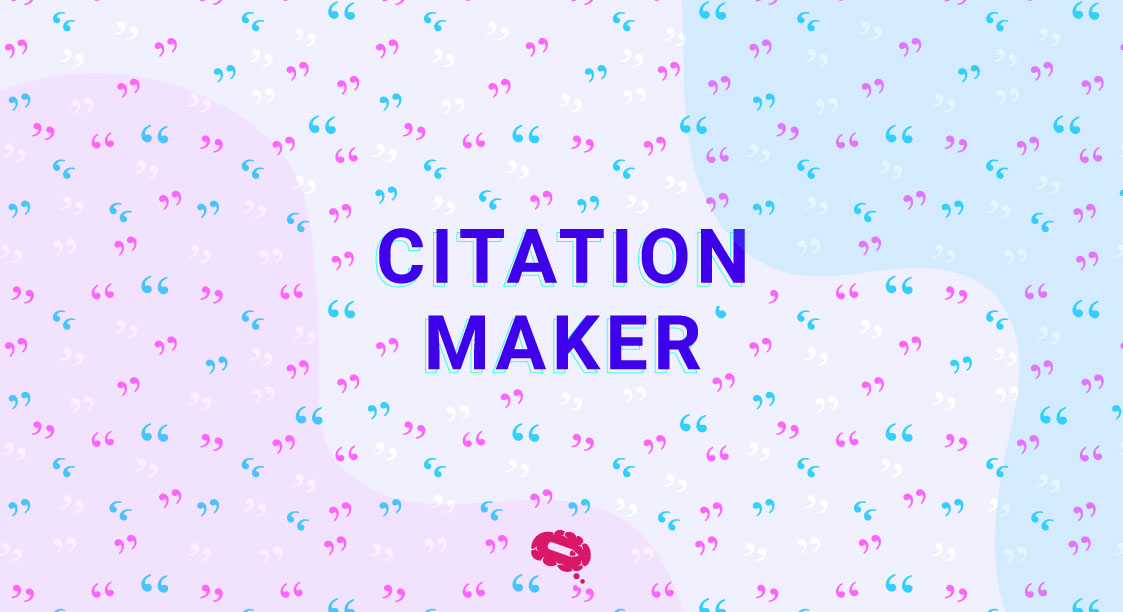Creating a bibliography can often seem like a daunting task, but it’s an essential part of academic writing. A bibliography is a comprehensive list of all the sources you have referred to in your work, including detailed bibliography entries that provide readers with the information they need to locate these sources themselves. Understanding how to properly format and organize your bibliography is crucial for presenting a polished piece of writing. In this guide, we will delve into various bibliography examples, illustrating the correct way to cite different types of sources, from books and journal articles to websites and online resources.
Understanding Bibliography Examples
What is a Bibliography?
A bibliography is an organized list of all the sources you have referenced in your research or writing. It typically appears at the end of your document, allowing readers to trace the origins of your information. Each bibliography entry gives detailed information about the source, such as the author’s name, the title of the work, the publication date, and where it was published. This not only lends credibility to your work but also prevents plagiarism by giving proper credit to the original authors. Bibliographies are essential in academic and professional contexts, where accuracy and accountability of information are paramount. Whether you are writing an essay, a research paper, or a book, having a well-organized bibliography will enhance the overall quality and reliability of your work.
Importance of a Bibliography
The importance of a bibliography cannot be overstated. Firstly, it lends credibility to your work by showing that you have conducted thorough research and consulted a range of reliable sources. This boosts your reader’s confidence in the accuracy and validity of your information. Additionally, an annotated bibliography can provide additional insights and context for the sources listed, helping readers understand the relevance and quality of each source. Secondly, a bibliography helps to avoid plagiarism by giving proper credit to original authors and creators. This is crucial in maintaining academic integrity and ethical standards. Furthermore, a well-structured bibliography allows readers to delve deeper into your topic by providing them with the resources to explore further. Lastly, it showcases your organizational skills and attention to detail, which are highly valued in both academic and professional settings. Overall, a comprehensive bibliography enhances the quality and trustworthiness of your work, making it an indispensable part of any research or writing project.
Common Bibliography Formats
When creating a bibliography, it is essential to use a consistent format, such as the APA style. The most common bibliography formats include APA, MLA style, and Chicago styles. The Chicago Manual of Style is versatile, used across various disciplines. It has two systems: Notes and Bibliography (for humanities) and Author-Date (for sciences). Each system has specific rules for listing authors, titles, and publication details. Familiarising yourself with these formats is crucial for ensuring that your bibliography meets academic standards and is easy for readers to navigate. Always check the specific guidelines required by your institution or publisher.
Creating an Annotated Bibliography
Gathering Sources Effectively
Effective source gathering is key to creating a comprehensive and accurate bibliography. Start by identifying credible sources relevant to your topic. Academic journals, books, and reputable websites are good starting points. Utilize library databases and online academic repositories to access peer-reviewed articles. When citing an article online, it is important to include URLs to ensure the source can be easily accessed and verified. Take meticulous notes as you read, ensuring you record all necessary citation information such as author names, publication dates, and titles. Use citation management tools like EndNote or Zotero to organize your sources and generate citations automatically. Additionally, be mindful of the relevance and timeliness of your sources; outdated or unrelated references can weaken your work. Lastly, always cross-check your sources to ensure their accuracy and reliability. By gathering sources effectively, you not only create a strong foundation for your bibliography but also enhance the overall quality of your research.
Organizing Your Bibliography
Organizing your bibliography is a crucial step in presenting your research coherently. Begin by deciding on the citation style required for your work, whether it be APA, MLA, or Chicago. For MLA style, organize a works cited page by listing sources alphabetically by the author’s last name. Each style has specific rules for arranging entries, such as alphabetically by the author’s last name. Be consistent in your formatting to maintain a professional appearance. Use hanging indents for each entry to enhance readability. Group similar types of sources together if your citation style allows, such as books, journal articles, and websites. Double-check that all necessary information is included for each source, like author names, titles, publication dates, and publishers. Keeping your bibliography organized not only helps your readers but also ensures that you have not missed any sources. A well-organized bibliography reflects your attention to detail and commitment to academic integrity.
Formatting Tips and Tricks in MLA Style
Formatting a bibliography correctly can significantly improve the clarity and professionalism of your work. Firstly, ensure that you use the correct font and size as specified by your citation style, typically Times New Roman, 12-point font. Use double spacing throughout your bibliography to enhance readability. Apply a hanging indent to each entry, where the first line is flush with the left margin, and subsequent lines are indented. This helps distinguish individual entries clearly. Pay attention to punctuation; different styles have specific rules regarding the use of commas, periods, and italics. For instance, book titles are often italicized in MLA and APA styles. Use consistent abbreviation rules for publishers and journal titles. Additionally, employ citation management tools like EndNote or Zotero to automate much of the formatting process, reducing the likelihood of errors. Following these tips and tricks will ensure your bibliography is both accurate and easy to read.
For annotated bibliographies, include a brief summary and evaluation of each source after the citation. This provides context and relevance, helping readers understand the significance of each source.
Bibliography Examples for Books
Single Author Books
Citing single-author books in your bibliography is straightforward but requires attention to detail. Begin with the author’s last name, followed by their first name. Next, italicize the book title and capitalize the significant words. Include the edition number if it is not the first edition. Follow this with the place of publication, the name of the publisher, and the year of publication. For example, a proper citation in MLA format would look like this:
Smith, John. Understanding Bibliographies. 2nd ed., Oxford University Press, 2020.
In APA format, the citation would be:
Smith, J. (2020). Understanding bibliographies (2nd ed.). Oxford University Press.
Each citation style has its own nuances, so it’s crucial to refer to the specific guidelines for the style you are using. Accurately citing single-author books enhances the credibility of your work and makes it easier for readers to find your referenced sources. For instance, an APA reference list entry for a book would look like this: Smith, J. (2020). Understanding bibliographies (2nd ed.). Oxford University Press.
Multiple Author Books
Citing multiple author books in your bibliography requires listing all authors in a specific order. For works with up to three authors, list each author by their last name followed by their first name, separated by commas. Use ‘and’ before the final author’s name. For example, in MLA format, a citation would appear as:
Brown, Lisa, and Mark Johnson. Exploring Bibliographies. Cambridge University Press, 2018.
For books with more than three authors, MLA allows you to list the first author followed by ‘et al.’:
Brown, Lisa, et al. Exploring Bibliographies. Cambridge University Press, 2018.
In APA format, the citation for a book by two authors would be:
Brown, L., & Johnson, M. (2018). Exploring bibliographies. Cambridge University Press.
For more than three authors, list all names up to 20 authors before using ‘et al.’.
Consistently following the correct format ensures that your citations are clear and verifiable, enhancing the reliability of your work. Multiple author books are cited similarly across different citation styles, ensuring consistency and clarity.
Edited Collections
When citing edited collections in your bibliography, the format differs slightly from single-author books. Begin with the editor’s name, followed by the abbreviation ‘ed.’ for a single editor or ‘eds.’ for multiple editors. The book title should be italicized and capitalized appropriately. Next, include the place of publication, the publisher’s name, and the year of publication. For instance, in MLA format, an edited collection citation would appear as follows:
Jones, Michael, ed. Perspectives on Bibliographies. Routledge, 2019.
For multiple editors, it would be:
Jones, Michael, and Sarah Lee, eds. Perspectives on Bibliographies. Routledge, 2019.
In APA format, the citation for a single editor would be:
Jones, M. (Ed.). (2019). Perspectives on bibliographies. Routledge.
For multiple editors, use:
Jones, M., & Lee, S. (Eds.). (2019). Perspectives on bibliographies. Routledge.
This accurate citation style ensures that credit is given to the editors and provides clear reference points for your readers. For more detailed guidelines on citing edited collections, refer to the MLA handbook.
Bibliography Examples for Articles
Journal Articles
Citing journal articles in your bibliography involves including several key details. Start with the author’s last name, followed by their initials. Next, provide the year of publication in parentheses. The title of the article should be in sentence case, meaning only the first word and any proper nouns are capitalized. Follow this with the title of the journal in italics and title case. Include the volume number in italics, the issue number in parentheses, and the page range. For example, in APA format, a citation would appear as:
Smith, J. A. (2020). Understanding bibliographies: A comprehensive guide. Journal of Academic Writing, 15(2), 45-67.
In MLA format, the citation would be:
Smith, John A. “Understanding Bibliographies: A Comprehensive Guide.” Journal of Academic Writing, vol. 15, no. 2, 2020, pp. 45-67.
An example of an annotated bibliography entry for a journal article in APA format would be:
Smith, J. A. (2020). Understanding bibliographies: A comprehensive guide. Journal of Academic Writing, 15(2), 45-67. This article provides a detailed overview of the structure and purpose of bibliographies, making it a valuable resource for academic writers.
By accurately citing journal articles, you provide a clear and reliable pathway for readers to locate the original source, enhancing the credibility of your work.
Magazine Articles
Citing magazine articles requires specific details to ensure accuracy. Start with the author’s last name, followed by their first name. Next, include the title of the article in quotation marks, with major words capitalized. Follow this with the title of the magazine in italics and title case. Include the date of publication, which may be in the format of day, month, and year, and then the page numbers the article spans. In MLA format, a citation would look like:
Doe, Jane. “The Evolution of Bibliographies.” Modern Research Magazine, 15 Mar. 2021, pp. 22-27.
In APA format, the citation is slightly different:
Doe, J. (2021, March 15). The evolution of bibliographies. Modern Research Magazine, 22-27.
An example of a bibliography entry for a magazine article in The Chicago Manual of Style would be:
Doe, Jane. “The Evolution of Bibliographies.” Modern Research Magazine, March 15, 2021.
By following these guidelines, you ensure that your bibliography is precise and allows readers to easily locate the original source, thereby enhancing the credibility and reliability of your work.
Newspaper Articles
Citing newspaper articles in your bibliography requires attention to detail. Start with the author’s last name, followed by their first name. Then, include the title of the article in quotation marks, capitalizing the major words. Next, provide the name of the newspaper in italics and title case. Follow this with the complete date of publication in the format of day, month, and year. If available, include the section and page number. For example, in MLA format, a citation would look like:
Brown, Lisa. “The Future of Bibliographies.” The Times, 12 Apr. 2021, p. A3.
In APA format, the citation would be:
Brown, L. (2021, April 12). The future of bibliographies. The Times, p. A3.
For online newspaper articles, include the URL at the end of the citation. For example, an MLA citation for an article online would be:
Brown, Lisa. “The Future of Bibliographies.” The Times, 12 Apr. 2021, (LINK 1).
Accurate citations help readers locate the original source, ensuring the credibility and traceability of your information. This thoroughness enhances the academic integrity of your work.
Bibliography Examples for Online Sources
Websites and Blogs
Citing websites and blogs requires different details compared to print sources. Start with the author’s name, if available, followed by the title of the page or post in quotation marks. Next, include the name of the website or blog in italics. Follow this with the date of publication in the format of day, month, and year. Finally, provide the full URL. For example, in MLA format, a citation would look like:
Doe, John. “Understanding Bibliographies in the Digital Age.” Research Insights, 15 Mar. 2021, www.researchinsights.com/understanding-bibliographies.
In APA format, the citation would be:
Doe, J. (2021, March 15). Understanding bibliographies in the digital age. Research Insights. https://www.researchinsights.com/understanding-bibliographies
If no author is available, start with the title of the page. Including URLs ensures that readers can directly access the source, maintaining the transparency and reliability of your work. Accurate citations for online sources are essential for a comprehensive and credible bibliography. For example, in APA style, a website citation would look like this: Author, A. A. (Year, Month Day). Title of web page. Website Name. URL.
Online Journals
When citing online journal articles, it’s essential to include several key details to ensure accuracy and credibility. Start with the author’s last name, followed by their initials. Then, include the year of publication in parentheses. The title of the article should be in sentence case, meaning only the first word and any proper nouns are capitalized. Follow this with the title of the journal in italics and title case. Include the volume number in italics, the issue number in parentheses, and the page range. Finally, provide the DOI (Digital Object Identifier) or URL. For example, in APA format, a citation would look like:
Smith, J. A. (2020). Understanding bibliographies: A comprehensive guide. Journal of Academic Writing, 15(2), 45-67. https://doi.org/10.1234/jaw.2020.15.2.45
In MLA format, the citation would be:
Smith, John A. “Understanding Bibliographies: A Comprehensive Guide.” Journal of Academic Writing, vol. 15, no. 2, 2020, pp. 45-67.
An example of an APA reference list for online journals would include all cited articles formatted as shown above, ensuring consistency and adherence to APA guidelines.
Including DOIs or URLs allows readers to easily locate the original source, ensuring the reliability and traceability of your information.
Social Media Posts and Publication Date
Citing social media posts in your bibliography requires specific details to ensure clarity and credibility. Start with the author’s real name, if available, followed by their username in square brackets. Include the date of the post in the format of day, month, and year. Next, provide the content of the post in quotation marks, ensuring it captures the essence of the original. Specify the type of post (e.g., Tweet, Facebook post) and include the URL directly linking to the post. For example, in APA format, a citation would look like:
Doe, John [@johndoe]. (2021, April 12). “Understanding bibliographies can enhance your research.” Twitter. https://twitter.com/johndoe/status/1381534321
In MLA format, the citation would be:
Doe, John [@johndoe]. “Understanding bibliographies can enhance your research.” Twitter, 12 Apr. 2021, https://twitter.com/johndoe/status/1381534321.
Accurate citations for social media posts ensure that readers can verify the source, thereby enhancing the transparency and reliability of your research. Social media posts are cited similarly across different citation styles by including URLs or the name of the database if the post was consulted online.
Transform Your Scientific Illustrations with Mind the Graph
Mind the Graph empowers researchers and scientists to create visually stunning and scientifically accurate graphics with ease. Our platform features a vast library of customizable templates and illustrations, making it simple to convert complex data into engaging visuals. Perfect for enhancing presentations, posters, and research papers, Mind the Graph ensures your work stands out and effectively communicates your findings. Elevate your scientific communication now – sign up for free and start creating today!

Subscribe to our newsletter
Exclusive high quality content about effective visual
communication in science.











